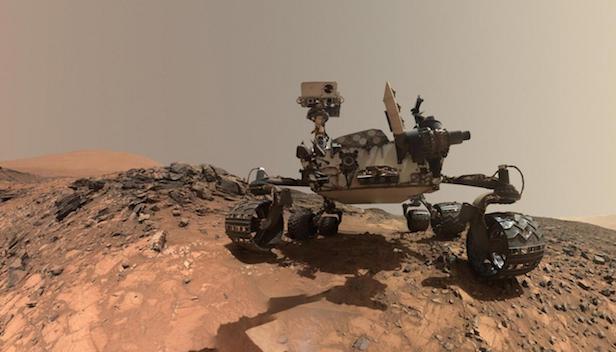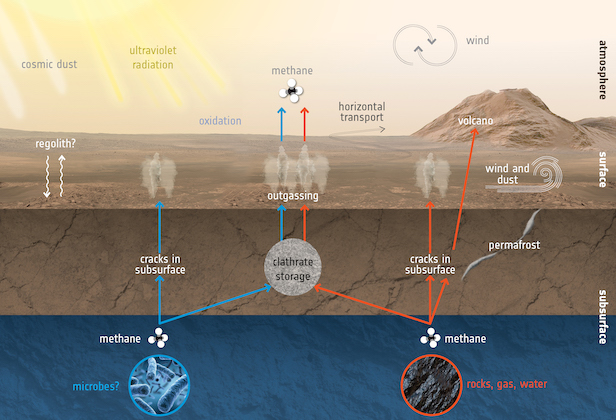Astronomers edge closer to solving Mars’ methane mystery
This result is based from methane readings taken by the ExoMars Trace Gas Orbiter and the Curiosity rover

The Curiosity rover reported a ‘highest-ever’ reading of methane from within the Gale Crater in June 2019. Image credit: NASA
Scientists have taken an important step towards revealing the mysterious source of methane on Mars, by refining estimates of the gas in the planet’s atmosphere.
The methane puffing from a huge crater on Mars could be a sign of life or other non-biological activity under the planet’s surface. Gale crater, which is 154 kilometres (96 miles) in diameter and about 3.8 billion years old, is thought by some to contain an ancient lakebed.
The team was able to improve the estimate of methane by using data from a satellite, ExoMars Trace Gas Orbiter, and the Curiosity Rover, which collects rock, soil and air samples for onboard analysis.
Dr John Moores, an Australian National University (ANU) Visiting Fellow based at York University in Canada who led the new study, says scientists had been speculating for more than a decade as to what the source of methane on Mars could be.
“This new study redefines our understanding of how the concentration of methane in the atmosphere of Mars changes over time, and this helps us to solve the bigger mystery of what the source might be,” says Dr Moores.
Co-researcher ANU Professor Penny King said there were several equally plausible explanations for the methane detected on Mars.

This graphic depicts some of the possible ways methane might be added or removed from the atmosphere. Image credit: ESA
“Some microbes on Earth can survive without oxygen, deep underground, and release methane as part of their waste,” says Professor King from the ANU Research School of Earth Sciences. “The methane on Mars has other possible sources, such as water-rock reactions or decomposing materials containing methane.”
Last year, scientists learned that methane concentrations changed over the course of the seasons with a repeatable annual cycle.
“This most recent work suggests that the methane concentration changes over the course of each day,” Dr Moores says. “We were able – for the first time – to calculate a single number for the rate of seepage of methane at Gale Crater on Mars that is equivalent to an average of 2.8 kilogram [6.2 pounds] per Martian day.”
Dr Moores says the team was able to reconcile the data from the ExoMars Trace Gas Orbiter and the Curiosity rover, which appeared to contradict each other with wildly different detections of methane.
“We were able to resolve these differences by showing how concentrations of methane were much lower in the atmosphere during the day and significantly higher near the planet’s surface at night, as heat transfer lessens,” he says.
Keep up to date with the latest news in All About Space –available every month for just £4.99. Alternatively you can subscribe here for a fraction of the price!




